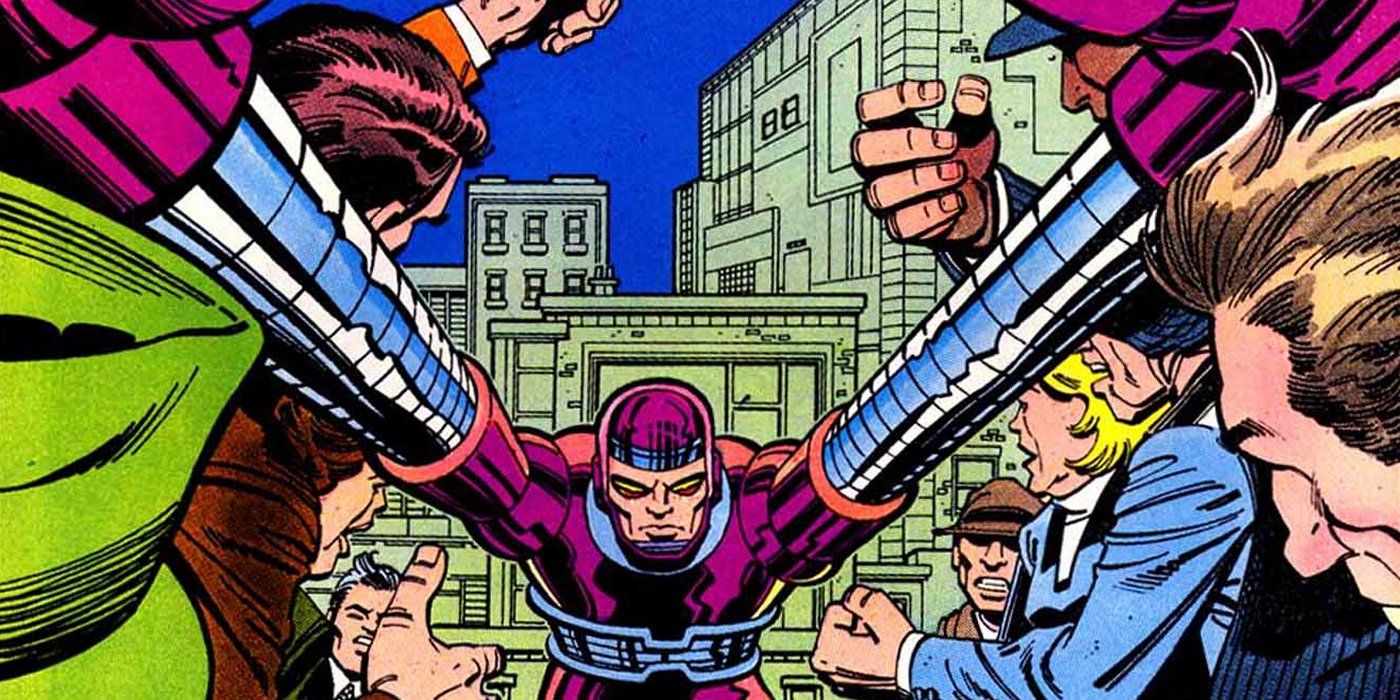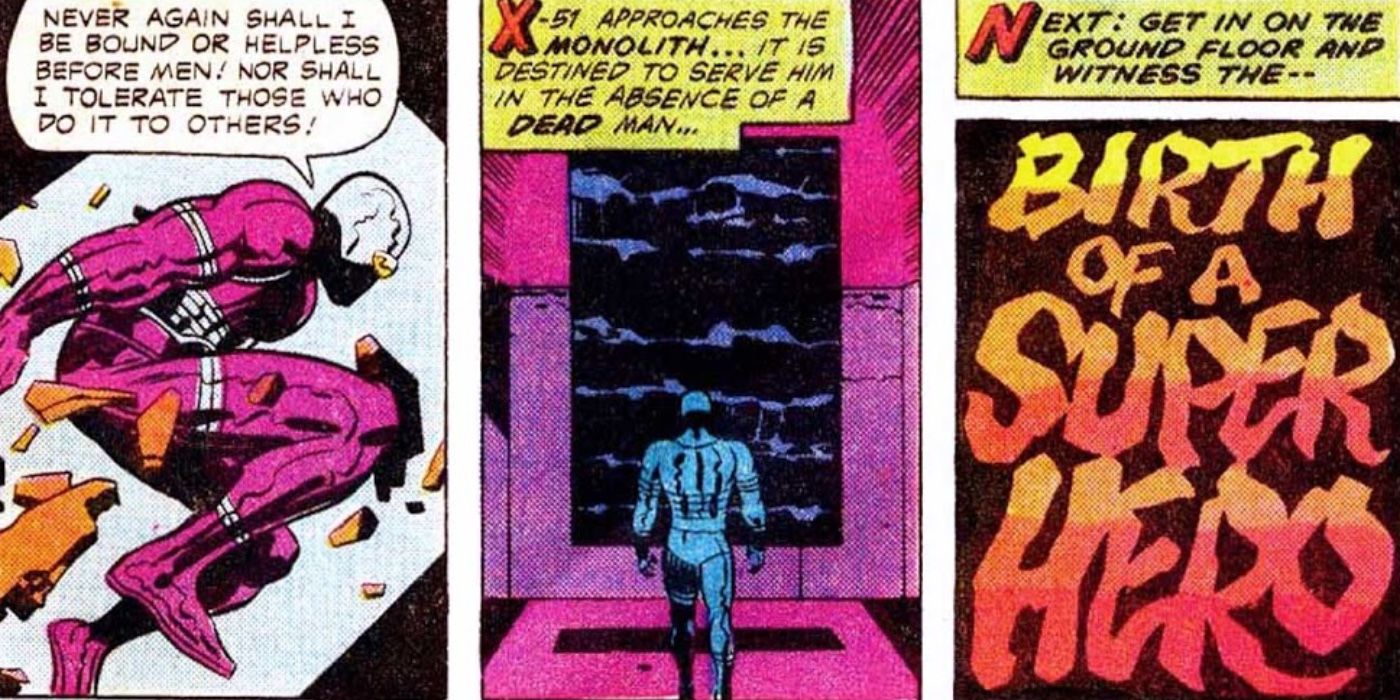Stanley Kubrick’s landmark 2001: A Space Odyssey is considered a masterpiece of both science fiction and film in general, and it has a surprising connection to the Avengers. The film was indirectly responsible for the creation of Machine Man, who has been a member of both Avengers and Nextwave.
Working with acclaimed science fiction author Arthur C. Clarke, Stanley Kubrick developed 2001: A Space Odyssey and the film would premiere in the United States on April 3, 1968. Noted for its superior production values and ambiguous story, the film has inspired generations of cinephiles and science fiction authors. One of the film’s most striking creations are the Monoliths, black rectangular objects that loom large throughout, serving as catalysts for the film’s story. In the late 1970s, Marvel published a short-lived series that adapted and later expanded on the film’s themes; the book was written and drawn by the legendary Jack Kirby. The book’s first seven issues retold the film’s story, complete with Kirby’s trademark flourishes. In issue eight, cover-dated July 1977, Kirby began a new story, one that would not only introduce a new Avenger but link the world of 2001 to the Marvel Universe.
The story, titled “The Capture of X-51” introduces readers to Doctor Broadhurst, a robotics expert whose dreams to create human-like androids has come crashing down, as the robots are lashing out against their human masters. Broadhurst and his associates built 51 such robots, and they are set to be destroyed; unbeknownst to Broadhurst, Abel Stack, one of his team members, had come to love the 51st as a son, giving him the name “Aaron.” Abel was killed in a bomb blast and Aaron is captured by the military to be dismantled. Out of nowhere, one of the Monoliths appears to Aaron, freeing him from his captors.
The 2001 comic book was designed to exist outside of the larger Marvel continuity, but Machine Man was too good of a character to go to waste, and he found his way to the Marvel Universe, first encountering the Hulk and the Fantastic Four. Machine Man would also cross paths with Iron Man, at a particularly low point in the latter’s career. He would meet the Avengers for the first time in Avengers #288 and would work with the team on several occasions. Machine Man would also have a notable stint with the team Nextwave in the 2000s.
2001: A Space Odyssey may seem like an odd place to debut a new Marvel character, but that is what Jack Kirby did. Machine Man was given his own book after 2001 ended, where Kirby began working him into the larger Marvel universe. Starting in the 1970s, Jack Kirby began exploring truly cosmic themes in his work, incorporating a diverse array of sources into grand cosmic epics. His Fourth World Saga, featuring the struggles of New Genesis against Darkseid, was one. The Eternals, which debuted a year before the 2001 comic, was another. The film 2001 looks at humanity’s place in the cosmos, showing humanity as insignificant, but with the potential to evolve into so much more. These thematic concerns overlap nicely with the veins Kirby was working in the late 1970s, making the book a natural fit. As Machine Man continued to develop in the Marvel Universe, the 2001: A Space Odysseytrappings were jettisoned in favor of a more conventional comic book approach; the Monolith that helped Machine Man was revealed to be created by the Celestials.
Machine Man has been an Avenger and a member of Nextwave, but this unlikely hero had the most unlikely of origins: Stanley Kubrick’s 2001: A Space Odyssey.


